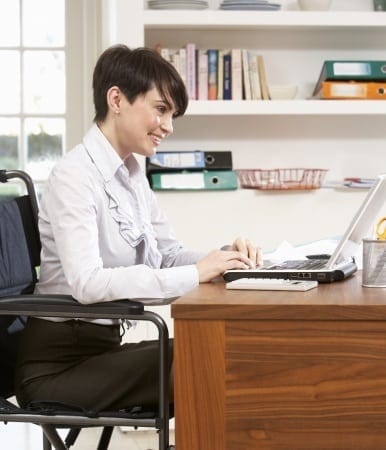 There are advantages as well as disadvantages of home-offices. They save money since you do not have to commute to reach your office, provide flexibility of working for shortened and/or extended periods without being too far from home and so on. However, it is challenging to consider a part of your home your office. Besides, nearly all the responsibility rests directly or indirectly on you. There are a few things that you should pay attention to in order to make your home-office a productive and comfortable space.
There are advantages as well as disadvantages of home-offices. They save money since you do not have to commute to reach your office, provide flexibility of working for shortened and/or extended periods without being too far from home and so on. However, it is challenging to consider a part of your home your office. Besides, nearly all the responsibility rests directly or indirectly on you. There are a few things that you should pay attention to in order to make your home-office a productive and comfortable space.
Demarcate office from home: It is a challenge that everyone has to face to reap benefit out of home-office. Your office furniture, technology and everything else can be productive only if the home does not interfere. Remove everything that is not conventionally found in a work-space from your home-office. Make a routine for working hours, although you can definitely extend or reduce it as per circumstances. Take breaks as often you need but return within the time that you decided to get back to work at.
Be choosy about chairs: Chair is one of the most important constituent of your office furniture. You will be the person who will use it the most, and a chair that is not the best for you will compel you to work for shorter period at a stretch and take more breaks. Even while working, you will be distracted to the discomfort repeatedly. Most importantly, sitting for long periods on an inappropriate chair can adversely affect your spine and have long-term impact on the body.
Install various light-sources: Eyes supply majority of the information to your brain, and they totally depended on light to function properly. You should have various light-sources, such as ceiling lamps, table lamps and, preferably, floor lamps too. If you have a window or a glass-ceiling, place your office furniture respectively beside or under it to utilise the natural light, which is the best by all criteria. Otherwise, use LED lamps in order to get bright light at significantly less bill. However, cover LED lamps with diffusers avoid dazzle.
Minimise irrelevant sound: Sound from around the office can be very distracting. Investing on sound-insulation is the best option to minimise unwanted sound. Carpet are good for sound-absorption, false ceiling can be the insulator for sound from the storey above and wooden door and office furniture can helpful too. Besides, telling the family-members personally is important too.
Use up-to-date technology: When everything peripheral is set right, do not ignore the resources that are central to your home-office – technology. Computer, scanner, printer, photocopier, shredder, punch, etc. should work fine and should be synchronised to the highest extent.
Consider ergonomics: Your posture is one of the critical determinants of how long and effectively you can. It encompasses everything from the height, size and type of chair, design and height of office furniture to location of monitor and keyboard. Besides, things should be stored according to the frequency of the need and the accessibility.
Image credit: stockbroker / 123RF Stock Photo
